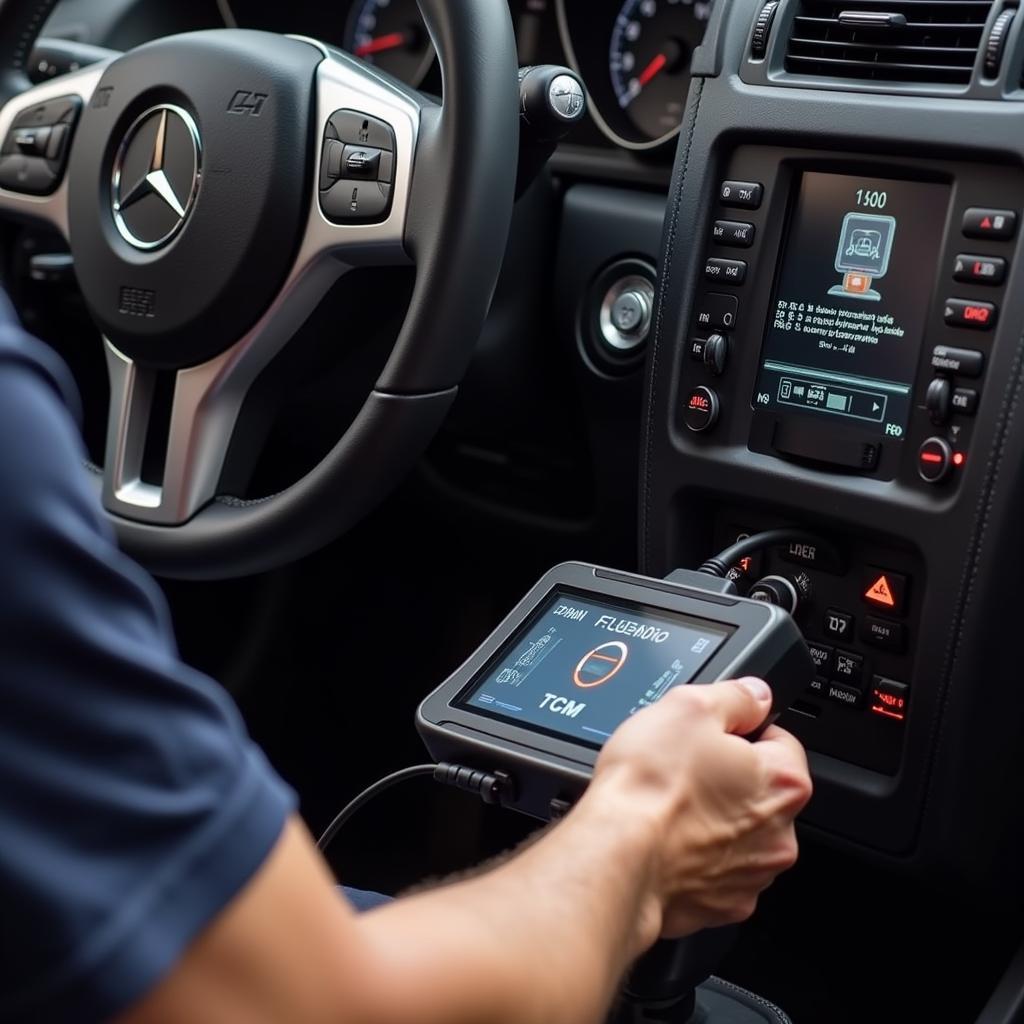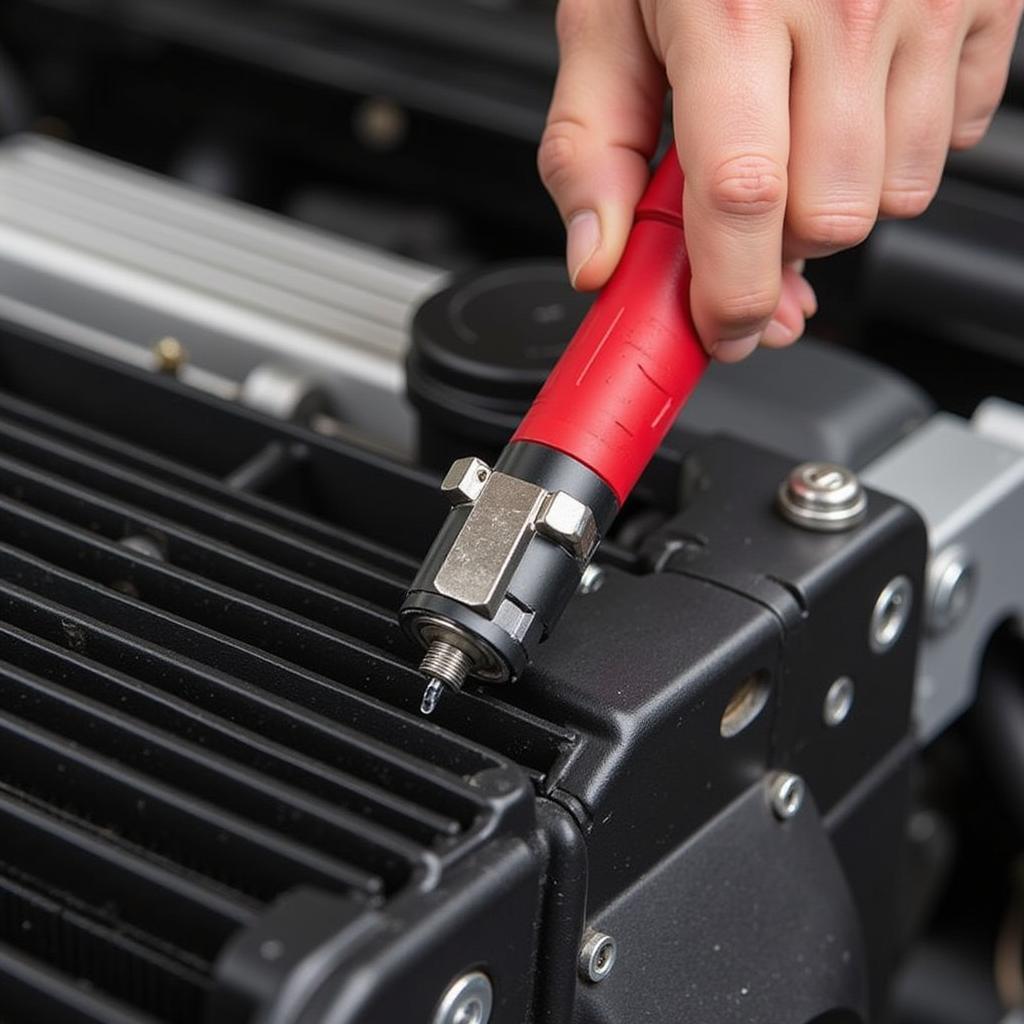Scanning Transmission Control Module (TCM) codes on a Mercedes Benz is crucial for diagnosing and resolving transmission issues. This article provides a comprehensive guide on how to effectively scan these codes, empowering owners, repair shops, and technicians to address transmission problems efficiently.
Understanding the TCM and its role in controlling your Mercedes Benz’s transmission is the first step towards effective diagnostics. The TCM is a sophisticated computer that manages gear shifting, torque converter lockup, and other critical transmission functions. When a problem arises, the TCM stores diagnostic trouble codes (DTCs), which are essential clues for pinpointing the root cause. Knowing how to access and interpret these codes can save you valuable time and money.
Understanding Mercedes Benz TCM Codes
TCM codes are specific to the transmission system. They are different from engine codes and provide insights into problems such as faulty solenoids, sensor malfunctions, or wiring issues. Accurately identifying these codes is essential for targeted repairs.
Different Methods to Scan TCM Codes
Several methods are available for scanning TCM codes, each with its own advantages and disadvantages. Choosing the right method depends on the available tools and your technical expertise.
-
OBD-II Scanners: These are widely available and can read generic and manufacturer-specific codes. They are relatively inexpensive and user-friendly, making them suitable for DIY enthusiasts and smaller repair shops. However, they may not access all TCM codes on certain Mercedes models.
-
Professional Diagnostic Scan Tools: These tools offer advanced functionalities, including access to all TCM codes, live data streaming, and actuation tests. While more expensive, they are essential for comprehensive diagnostics and complex repairs. Professional scan tools are commonly used by dealerships and specialized repair facilities.
-
Mercedes-Benz Specific Software: This software, often used in conjunction with a dedicated interface, provides the most in-depth access to the TCM and other vehicle systems. It offers advanced functionalities such as coding, programming, and guided diagnostics. However, it requires specialized knowledge and is typically used by factory-trained technicians.
 Scanning TCM codes on a Mercedes Benz using an OBD-II scanner
Scanning TCM codes on a Mercedes Benz using an OBD-II scanner
Step-by-Step Guide to Scanning TCM Codes Using an OBD-II Scanner
-
Locate the OBD-II Port: The OBD-II port is usually located under the dashboard on the driver’s side.
-
Connect the OBD-II Scanner: Turn the ignition to the “on” position (without starting the engine) and plug the scanner into the OBD-II port.
-
Turn on the Scanner: Power on the scanner and follow the on-screen instructions.
-
Select “Read Codes”: Choose the option to read diagnostic trouble codes.
-
Identify TCM Codes: Look for codes specifically related to the transmission control module (TCM). These codes usually start with the letter “P” followed by a four-digit number.
-
Record the Codes: Write down the codes and their descriptions for further analysis.
Interpreting TCM Codes
After scanning and recording the codes, the next step is to understand their meaning. Using a reliable code lookup resource specific to Mercedes Benz is crucial. These resources provide detailed descriptions of each code and potential causes. It is similar to [mercedes e class diagnostic port location], the knowledge is essential.
Common TCM Codes and Their Meanings
While the specific codes and their meanings vary depending on the Mercedes model and year, some common TCM codes include those related to shift solenoids, speed sensors, and torque converter clutch. Accurately interpreting these codes requires access to reliable information and potentially further diagnostic testing.
Advanced Diagnostics and Troubleshooting
In some cases, simply reading the TCM codes may not be enough to pinpoint the exact cause of the problem. Further diagnostic testing might be necessary. This could involve checking wiring harnesses, testing sensors, or using specialized diagnostic equipment. For complex issues, consulting with a qualified Mercedes Benz technician is recommended. You can learn more about suitable tools at [tcm programming tool mercedes].
Conclusion
Scanning TCM codes is an essential first step in diagnosing transmission problems on your Mercedes Benz. Understanding the different scanning methods, interpreting the codes, and performing further diagnostics when necessary will help you or your technician address transmission issues effectively, ensuring optimal vehicle performance and longevity. Similar to understanding [how to fix gear light on mercedes 2001 slk] or locating [mercedes r129 diagnostic port], learning how to scan TCM codes is crucial for any Mercedes owner or technician. For those who prefer older models, you might need to research about [mercedes w210 scan tool] for more accurate results.
FAQs
- What is a TCM? A TCM is the Transmission Control Module, the computer that controls your Mercedes Benz’s transmission.
- Why should I scan TCM codes? Scanning TCM codes helps diagnose transmission problems.
- What tools do I need to scan TCM codes? You can use an OBD-II scanner or a professional diagnostic scan tool.
- Where can I find the meaning of TCM codes? Use a reliable code lookup resource specific to Mercedes Benz.
- What should I do if I can’t fix the problem after scanning the codes? Consult a qualified Mercedes Benz technician.
- How often should I scan TCM codes? It’s recommended to scan them whenever you experience transmission issues.
- Can I scan TCM codes myself? Yes, you can use a basic OBD-II scanner for basic code reading.
Need further assistance? Contact us via Whatsapp: +1 (641) 206-8880, Email: CARDIAGTECH[email protected] or visit us at 276 Reock St, City of Orange, NJ 07050, United States. Our customer service team is available 24/7.

